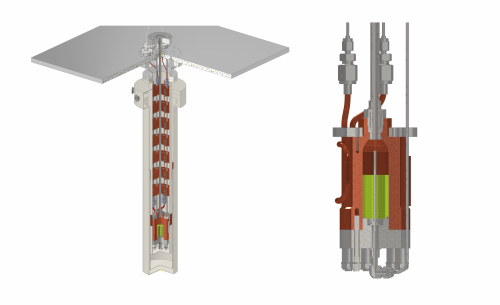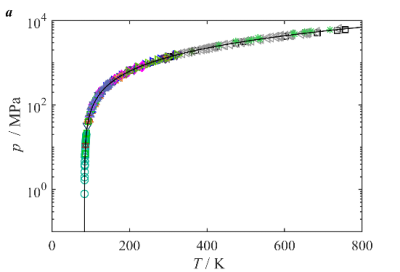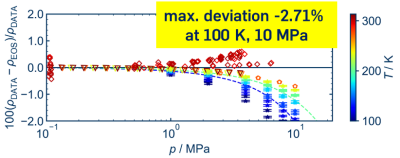Hydrogen plays a prominent role in all concepts for CO2 mitigation; technologies for generation and for liquefaction of hydrogen need to be scaled up by orders of magnitude. This scale up has to rely on simulations of innovative processes, which are necessarily based on thermodynamic property models. An analysis of the available models indicated that properties of hydrogen are described with one order of magnitude larger uncertainty than properties of well-known fluids.


Experience with process-simulation based scale-up shows that these uncertainties will likely result in large additional costs and delays. To improve the description of properties of hydrogen and to enable the application of advanced liquefaction concepts, fundamental breakthroughs are required with regard to the metrology of fluids at cryogenic temperatures and with regard to accurate modelling of these complex systems – the work funded by the ERC Advanced-Grant ThermoPropHy systematically addresses these points. Experimental equipment is being developed that allows for highly accurate measurements of density and speed of sound at temperatures down to the triple point of hydrogen (14 K), far below current temperature limits.

Property models will be developed that yield a highly accurate and consistent description of arbitrary mixtures of ortho- and parahydrogen for the first time, including the effects of the temperature dependent ortho/para-equilibrium. Solid phases of impurities affecting large-scale liquefaction processes will be described by models that are consistent to accurate fluid-phase models.
Measurements and modelling of mixtures of helium, neon, and argon establish an accurate basis for the application of mixed fluid cascade (MFC) processes for hydrogen liquefaction. Based on experimental data obtained in ThermoPropHy, improved mixture models for pre-cooling mixtures are being developed.
